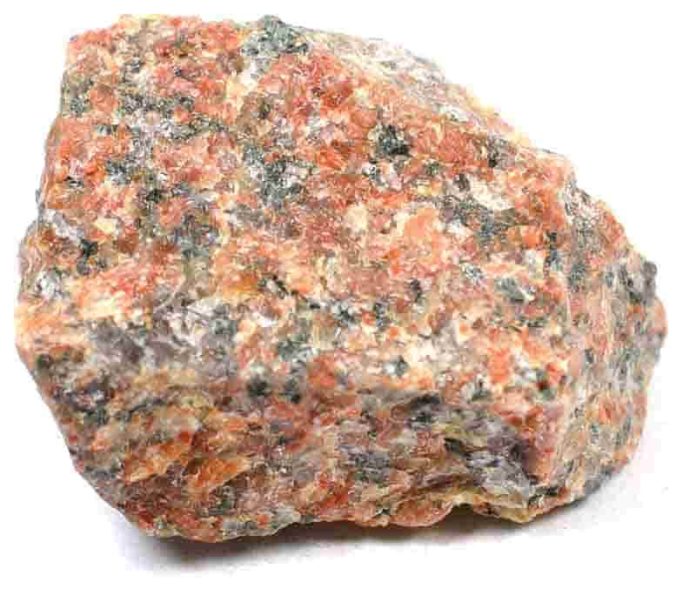Two U.S. food companies have received the go-ahead to sell chicken grown from cultivated animal cells in a production facility. It’s the first time meat grown this way will be sold in the U.S.

Finally, ethical cannibalism is within our grasp.

I don’t know. I feel that the soul is part of what makes cannibalism so delicious.

._.

Did you change your avatar just for this comment?
Pretty sure it’s the chianti.

get out the chianti and fava beans

Would you eat yourself if lab grown?

I’m imagining the gp having Soylent Green/cockroach milk while (imaginary) middle class have this, Elites have this with a side of poors.

This is how you get prions.

Gonna wait a bit because I wanna make sure there aren’t any crazy unforeseen side effects on humans, but this is a tremendous step forward for several environmental and ecological problems and I’m ready for a minimal-kill future.

Yeah. Interested in seeing cholesterol.
But very excited that those interested in non kill meat will soon have an option.
I, for one, am looking forward to the zombie apocalypse that will result from this.

Anyone have any ideas on price versus kill meat? Especially longterm?

Exactly where my head is. Assuming it is currently expensive since it is new and such little supply. But I’m wondering 5+ years down the road… Is it likely that it will be less expensive than traditional counterparts?

Bioreactors are much less efficient at producing meat than their biological equivalents. They are essentially huge buckets of liquid with nutrients without proper heart/lungs, circulatory/respiratory system that can evenly distribute oxygen and remove CO2, so you need to be constantly shaking and mixing… which doesn’t help with the heat that the reactions produce. You need to keep a constant temperature… and you also don’t have an immune system to protect from bacterial growth that could contaminate the whole batch.
This is much more expensive, more risky for health and less environmentally friendly than naturally grown meat. Natural biological organisms have evolved across millenia to be extremelly efficient at what they do. You just can’t compete using current tech.
I don’t think we would be able to get a cheap sustainable alternative to traditional meat without essentially replicating the way animals grow. And at that point, I wonder if killing an artificially designed animal is any better.
Personally, i think protein from breeding maggots is the more realistic and sustainable source of meat at the moment… starting from a simple lifeform and adapting it is likely more viable.

I don’t get how it could be less environmentally friendly than traditionally grown meat from cows or whatever. Cows need to support not just the meat growing systems in the their bodies, but everything else…and they need to live for years, with constant food and land.

Yeah that comment does not make much sense. Our bodies have to function every day moving around and doing things. The lab grown stuff just needs to make cells. It should be much closer to growing fungus or yeast.

You’re right and I think the commenter was sprouting bollocks. Reddit used to be plagued with comments like that which are simply meant to cast doubt, and aren’t based on facts.

Cows are not the best choice, but bioreactors are still worse. At least with current tech.
From this article:
It’s a complex, precise, energy-intensive process, but the output of this single bioreactor train would be comparatively tiny. The hypothetical factory would need to have 130 production lines like the one I’ve just described, with more than 600 bioreactors all running simultaneously. Nothing on this scale has ever existed—though if we wanted to switch to cultivated meat by 2030, we’d better start now. If cultured protein is going to be even 10 percent of the world’s meat supply by 2030, we will need 4,000 factories like the one GFI envisions, according to an analysis by the trade publication Food Navigator. To meet that deadline, building at a rate of one mega-facility a day would be too slow.
All of those facilities would also come with a heart-stopping price tag: a minimum of $1.8 trillion, according to Food Navigator. That’s where things get complicated. It’s where critics say—and even GFI’s own numbers suggest—that cell-cultured meat may never be economically viable, even if it’s technically feasible.
[…]
Humbird spent more than two years preparing his analysis for Open Philanthropy. The resulting document, which clocks in at 100 single-spaced pages with notes and appendices, is the most comprehensive public study of the challenges cultured meat companies will face. (An abridged, formally peer-reviewed version has since appeared in the journal Biotechnology and Bioengineering.) Their future doesn’t look good. Humbird worked off the assumption that the industry would grow to produce 100 kilotons per year worldwide—roughly the amount of plant-based “meat” produced in 2020. He found that even given those economies of scale, which would lower input and material costs to prices that don’t exist today, a facility producing roughly 6.8 kilotons of cultured meat per year would fail to create a cost-competitive product. Using large, 20,000 L reactors would result in a production cost of about $17 per pound of meat, according to the analysis. Relying on smaller, more medium-efficient perfusion reactors would be even pricier, resulting in a final cost of over $23 per pound.

This is an interesting comment and a point of view I haven’t seen before. Do you have any source materials for the information in the first two paragraphs? I’d like to read more, from sources I can validate. Not that I disbelieve you particularly, I simply want to see the info from a more scientific source than social media.
And as for
i think protein from breeding maggots is the more realistic and sustainable source of meat
YUK I don’t think that will sell very well. There will be more than enough resistance to lab grown “meat”.

YUK I don’t think that will sell very well. There will be more than enough resistance to lab grown “meat”.
Yeah, I’m 100% down with cricket-based protein, but even I balk at maggot-based protein. Gonna be a hard sell, for sure.

I’m the opposite : I eat maggots without any issues but the crickets weird me out.

Some articles:
https://thecounter.org/lab-grown-cultivated-meat-cost-at-scale/
https://www.ucdavis.edu/food/news/lab-grown-meat-carbon-footprint-worse-beef
https://onlinelibrary.wiley.com/doi/10.1002/bit.27848 (this is a very technical and in-depth article, but you can skip to the conclusion section)A 25min documentary video showcasing some views from experts:
https://www.youtube.com/watch?v=V0zCf4Yup34

As someone who works in a dairy manufacturing facility, you really aren’t making sense.
You’re describing fairly straightforward industrial processes.
There is bacterial growth in every single food manufacturing facility in the world. It’s unavoidable.
That’s why there is constant, and I mean constant cleaning. Stainless steel or silicon are used for any surfaces that the product touches, there is a TON of QA testing done specifically for allergens and bacteria. All factories are held to regulatory standards, I can’t imagine this operation would be any less safe and compliant.

How much does it cost to maintain such a factory compared to how much does it cost to keep livestock for the same amount of produce?
I didn’t say it’s not possible to culture it, I’m saying it’s more expensive and less sustainable. The food industry is huge, current livestock production is already among the largest CO2 producers. So if we want to replace them we should choose an option that is cheaper and produces less waste, not more. Otherwise the costs of food as well as the CO2 levels are gonna skyrocket.
It’s hard to compare with current bioreactors because for making it our primary meat source you’d need a scale that hasn’t existed ever before in the pharmaceutical industry. The cell density needs to be relatively low, so you need huge tanks for tiny amounts. Also… meat cultures are particularly sensitive to both bacterial AND viral infections. Meat production is slow and the smallest contamination at the start can very easily make the end result not up to standards.
Quoting from this article.
“A key difference in the CE Delft study is that everything was assumed to be food-grade,” Swartz said. That distinction, of whether facilities will be able to operate at food- or pharma-grade specs, will perhaps more than anything determine the future viability of cultivated meat.
The Open Philanthropy report assumes the opposite: that cultivated meat production will need to take place in aseptic “clean rooms” where virtually no contamination exists. For his cost accounting, Humbird projected the need for a Class 8 clean room—an enclosed space where piped-in, purified oxygen blows away threatening particles as masked, hooded workers come in and out, likely through an airlock or sterile gowning room. To meet international standards for airborne particulate matter, the air inside would be replaced at a rate of 10 to 25 times an hour, compared to 2 to 4 times in a conventional building. The area where the cell lines are maintained and seeded would need a Class 6 clean room, an even more intensive specification that runs with an air replacement rate of 90 to 180 times per hour.
The simple reason: In cell culture, sterility is paramount. Animal cells “grow so slowly that if we get any bacteria in a culture—well, then we’ve just got a bacteria culture,” Humbird said. “Bacteria grow every 20 minutes, and the animal cells are stuck at 24 hours. You’re going to crush the culture in hours with a contamination event.”
Viruses also present a unique problem. Because cultured animal cells are alive, they can get infected just the way living animals can.
“There are documented cases of, basically, operators getting the culture sick,” Humbird said. “Not even because the operator themselves had a cold. But there was a virus particle on a glove. Or not cleaned out of a line. The culture has no immune system. If there’s virus particles in there that can infect the cells, they will. And generally, the cells just die, and then there’s no product anymore. You just dump it.”
If even a single speck of bacteria can spoil batches and halt production, clean rooms may turn out to be a basic, necessary precondition. It may not matter if governments end up allowing cultured meat facilities to produce at food-grade specs, critics say—cells are so intensely vulnerable that they’ll likely need protection to survive.
This is referencing a very in-depth paper by PhD, PE, Chemical Engineer David Humbird.

I’m interested too. Long-term with economies of scale, hopefully no kill.
But idk about now, or inour lifetime. Like we’ve been farming for a long long time. And at least for a while, the most efficient things for producing animal protein, are … Animals.
I think this will be targeted to (relatively) rich people who want to cosplay being vegetarian and vegan. Tbh I’d try it.

Really looking forward to this! Don’t care if they find out it gives you cancer. I smoked cigarettes for decades and you can’t dip those puppies in mango hab sauce straight out the air fryer!

With all they pump into cattle, I wonder if labgrown would actually be healthier than the real thing?

Rock on, my friend.

I was curious if they need to use any animal products in their process so I checked out their website and they’re claiming that the cell culture media they use for food production is animal component free. “FBS is used in small amounts to sustain cell viability and growth during our cell line and development stage. This stage occurs well before commercial food production begins. Our company goal is to completely eliminate the use of animal components in our cell feed, and we continue to make progress on this front.” I would be interested to read more about the details of their cell culture technology but they don’t seem to have published any papers describing it.
That’s for GOOD Meat, right? I thought I read in UPSIDE’s materials that they’ve completely eliminated animal components from their process.

That quote is directly from their website (you have to scroll down the page) so it sounds like they use FBS in their R&D but not the actual food production batches. They also have a blog post about being animal component free so the details are a little confusing.

I wonder if it would be considered vegan? Technically not harming an animal, right?

It depends on whether you consider the conditions under which the original cells were donated as part of the product.

Yep, to me it really depends on the welfare of the animal donors and the circumstances around donation.

To be honest it feels like making perfect the enemy of good if the initial cell lines able to support billions of cows worth of meat without killing those cows at the sacrifice of a few cows in the first place. But there are plenty of idealists out there who would reject that train of thought, so oh well.
But we’ll get there either way.

Sure but vegans can already eat other food just fine without needing this.

Many many vegans very much want others to stop eating meat as well. Notably because there’s no ethical way to eat or consume almost anything under veganism until animals aren’t being exploited for it. What’s more, even many non-vegans would be happy with that world, I for one would be extremely happy in a world where we can produce synthetic versions of animal products.
The issue is a little more complex than “vegans can just eat other things”

Yeah I agree I’m just saying:
- If vegans object that’s fine/won’t affect these products.
- No one eating animals today would have any moral conflict about eating these kind of meat. Since they already kill and eat a much more living thing.

Some lab grown meat companies have figured out how to do it without any animal cells, but it’s a fairly new development. Requiring actual animal cells is just v1
Things move quickly though, there is already non-animal whey being created that is chemically equivalent to dairy whey using the same process they use to make insulin. Check out Coolhaus. They also make cream cheese and a babybel cheese with it I think

That would be ideal, it would be possible to consume meat keeping cruelty free standards. Hopefully it will happen soon.

I can see how you can make fake meat without animal cells - but this class of food is ‘lab grown meat’. When you don’t have animal cells it’s no longer lab grown animal meat.
edit: I guess there is a difference between using animal cells during ‘production’ and during ‘development’. I CAN see how the former can be achieved, but not the latter.

@GordomeansPhat Difficult to say… hopefully it will be possible to trace the animal donors.

Super exited. Meat is murder and I commit it daily. Really want vat grown pork, as pigs are too smart to be that delicious.

I am excited and all for artificial replacements that have equivalent taste and nutrition. Glad humanity has progressed to the point where we can raise ourselves above the need to farm animals. This should make space travel more tolerable too.

oh I so agree. I tried giving up pork but the bacon. the bacon!

Star Trek IRL.

I’m okay with this.

It looks like their first release is at some fancy restaurant in San Francisco. I would love to try it but I’m sure it will be packed for forever. I’ll wait until it hits the shelves

I’m vegetarian but I’d be ok with eating lab grown meat. I’m looking forward to being able to try some

This is exciting!!! Hoping lots more money gets thrown into making this marketable, the beef industry better not attack this to keep it from their market. Cows require way too much energy and money to raise in the numbers we do. It’s a win win… less abuse for the cattle because itll be less cattle, healthier planet, etc.

The beef industry will 1000% definitely attack this

Just like how big coal tried to fight green energy for decades yet look at the price per watt for solar recently - it’s plummeting.
They can try to fight progress all they want, but they can’t stop it. The market will determine if this is the next big thing or not.

I would definitely eat this. I’m sure at first it will be expensive, but once is available I would make the switch to this.

I am so excited to get to eat this. when I can afford it.
But when I can, fuck yeah let’s go.

I think it’s going to be an expensive novelty for a while. I’ll definitely be buying it on occasion, even if it is somewhat expensive. To me the cost is worth experiencing something that still feels like science fiction!

Yeah I’m looking forward to trying it too. My only concern is if they’re growing fat cells along with the muscle cells, otherwise it’s just not going to taste as good. I much prefer a good strip or ribeye instead of a lean filet.

I love these articles because it makes me hopeful for the future. I used to see them in a community called wheresthebeef.

I wonder if, in the very distant future, people will be able to grow their own meat at home from a small sample. And if so, whether anyone will try making burgers from themselves, when they get a cut or a scrape.

Your mind works in disgusting ways…
… I like it lol

Like people sharing their sourdough starter, or homemade yogurt culture. That would be something!
